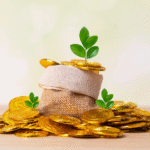
In the past, to pay the bills, people had to wait in a queue, fill out paper forms, and suffer from due-date stress. In recent years, chores that used to take much of our time have mostly undergone a turn-around; it could take minutes to settle everything, and you wouldn’t have to step out of your house to get chores done, for the said bills, only to mention a few.
Payment apps are simplifying not just transactions but more importantly, they are changing the way people spend money, look at operations, and the concept of ease. Therefore, this passage is about the transformation of bill payments. In this, you will explore the changes and the part which apps have played in shaping the future. Most transactions that were cash earlier have now become electronic.
From Manual to Seamless: The Digital Shift
Conventional methods of bill payment implied queuing in offices, writing checks, and keeping paper receipts for records. The process was quite time-consuming, and one had to deal with the situation of not being able to make the payments in time, particularly when the payment windows were during office hours only. The digital shift eliminated those hurdles, allowing customers to pay bills while sitting in their homes or on their way.
It is true that the online payment system is very convenient, but the boundary has been again extended when payment apps came into the picture. You can just imagine and fully feel how a reminder pops up, an intuitive interface, or the one-tap option helps to convert the entire activity into the smoothest thing at home or outside. The result is that there are no missed deadlines or rushes at the last minute—transfers have already been automated, fast, and dependable.
Smart Features for Smarter Living
The existence of a modern bill payment platform, in this case, has numerous advantages that are beyond impressive. First of all, the user interface is being designed with ease in mind because most of them also have the same billers whether electric, water, LPG, DTH, postpaid, etc., on the same dashboard. This implies that you can pick out the most convenient time and date to make payments or multifunction a warning whenever the bills get too high.
Lots of apps will now offer attractive incentives to users who manage their finances properly, such as cashback, discounts, and loyalty points for regular payment; this completely changes the nature of the payment process which has also been an income-generating strategy. These perks generate an ecosystem where having one’s financial affairs in order is not only a matter of making the procedure efficient but also of saving money.
Some platforms are even equipped with the necessary tools to carry out an analysis of the spending trends of the user, which will help them in managing their monthly budgets more effectively and in easily spotting out anything that seems a bit off.
Unified Dashboards and Cross-Platform Integration
It further addresses the issue of managing payments cluttered across multiple bank accounts, as billing, alongside the other financial instruments of your daily life, can now be handled by a single instrument. Your monthly bill payment can now be managed from the same app that handles your credit cards, insurance premiums, loan EMIs, and mutual fund SIPs.
Time saving, getting a more vivid overview of the overall financial health of yours are just a few of the advantages that you will be getting from the one-time consolidation of the different accounts that you hold.
Money movement has been made easy by such integrations, as payments can now be synchronized with any means of digital money such as bank accounts, digital wallets, and UPI interfaces. Transactions have become smooth and secure instantly with no hitches.
The Rise of Auto-Debit and Subscription Management
One of the most beloved capabilities of payment applications is definitely auto-debit today. It’s a one-time thing and you are good to go as this service enables the app to deduct the bill amount from your account or wallet by itself on every due date, thus no personal intervention required.
There are various apps available these days that not only allow users to manage their recurring subscriptions e.g. the ones for OTT platforms, cloud storage, or long-term commitments at the gym in the same space but also avoid service disruptions and late fees and also they can be paused, canceled, or tracked without the need to visit multiple websites or apps.
This shift in money management has made it much easier than before to be aware of digital expenses and thus reduce spending and at the same time, the chances of missing out on services or late fees.
Security and Trust in the Digital Age
Given that bill payments are becoming more electronic, users have every right to demand and expect foolproof security features. For instance, a payment app has started to offer such functionalities as two-step verification, end-to-end encryption, biometric login, and real-time alerts against fraud.
It is not only new laws and the increasing awareness of the public that have contributed to more transparency and safety in digital transactions but also secure tokenization, checkable billers and immediate confirmation messages which have played a part in increasing the confidence of the user.
Also, customers can now reach chat support easily and are allowed grievance redressal options within the apps that help in prompt issue resolution, hence, an okay digital experience that further builds trust.
The Future: AI, Voice Commands, and More
It seems that the next advancements in the area of bill payments will be a result of AI, automation, and voice technology. For example, smart assistants like Alexa, and Google Assistant are on the move, and they are using voice technology and AI together to do payments that are voice-activated and the acceptance of these is evidently going to rise.
The use of AI will bring about the era of highly personalized insights, thereby, assisting users to predict their future bills on the basis of historical data, also to detect fraud or other irregularities and suggest payment dates as per the cash flow. In addition to the above, the machine learning method can also auto-select the most suitable payment method or even offer a cashback program by considering the habits of the user.
As digital finance is more integrated into everyday activities, the demarcation between transactions and lifestyle management will get even more obscure.
Who Benefits the Most?
The main winners of this move to digital are the people who use it every day—the office workers, students, families, and even the old ones. The convenience of tracking payments, evading penalties, and managing cash flow provides comfort that conventional means rarely give.
Furthermore, businesses profit from being able to send automatic bills, quicker settlement cycles, and lesser paperwork. The government also has been quick to adapt to this change and therefore, services like easy utility and tax payment are possible for urban and rural citizens.
Final Thoughts
The payment of bills in the future is digital, intelligent, and is being integrated into our lives more and more. The new features, secure platforms, and automation of payment apps have reshaped the bill-paying landscape of 2025. A chore that could not be more monotonous in the past is now a streamlined and efficient and sometimes even a fun experience—simplifying life, just one bill at a time.











Leave a Reply
You must be logged in to post a comment.